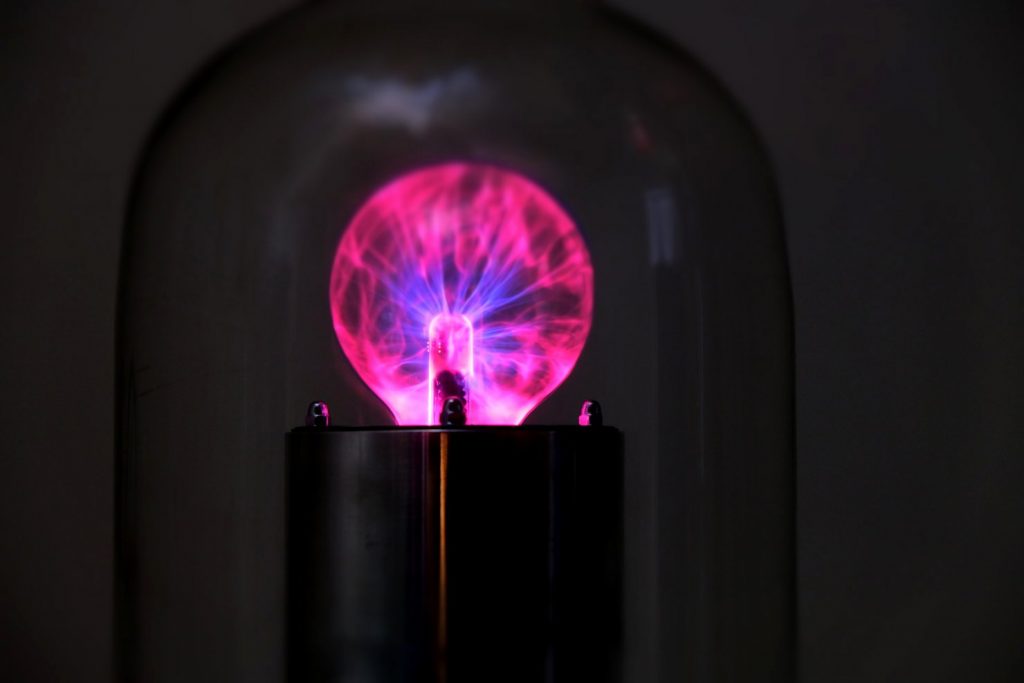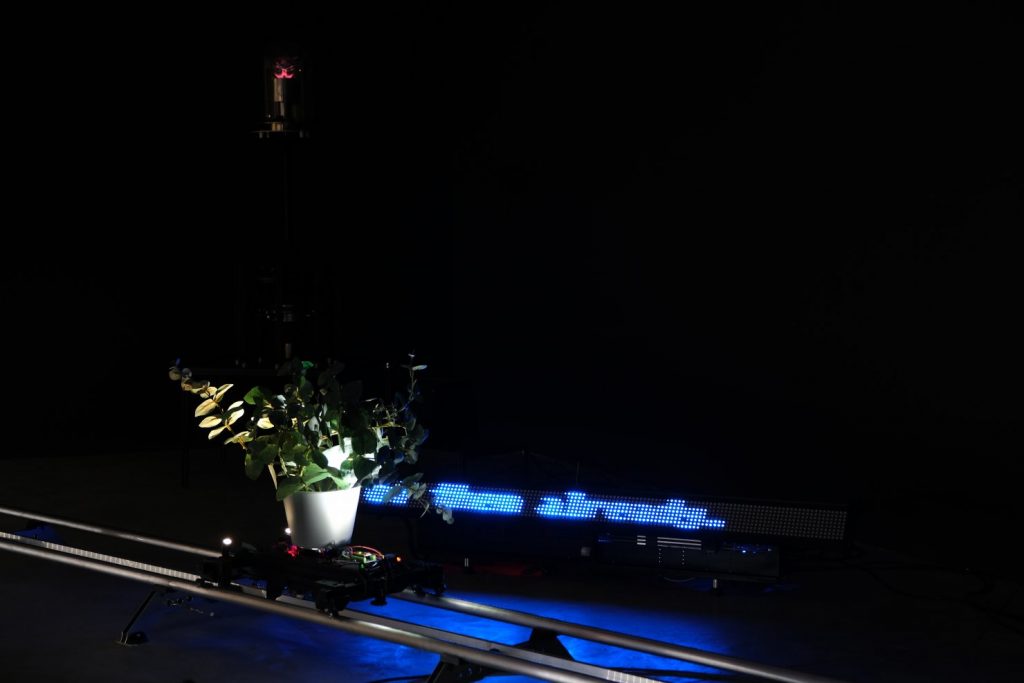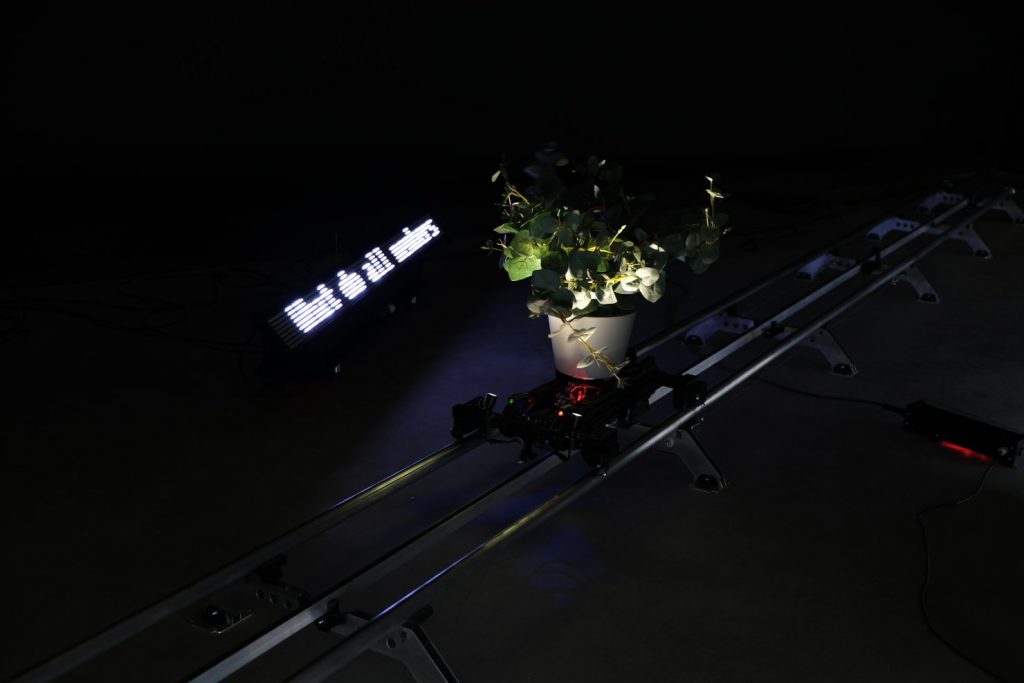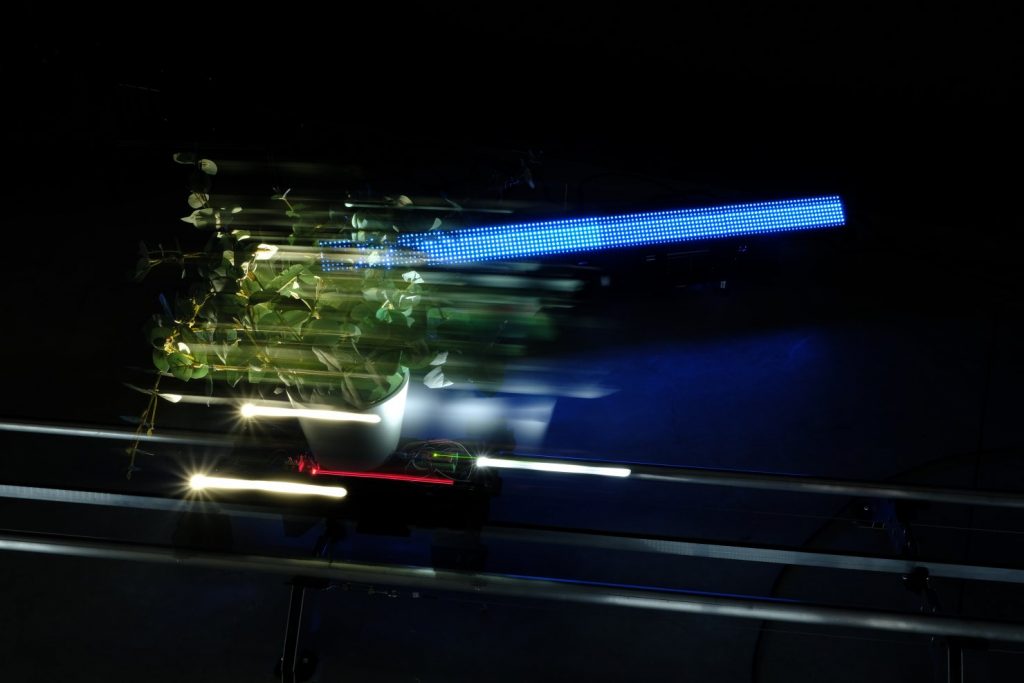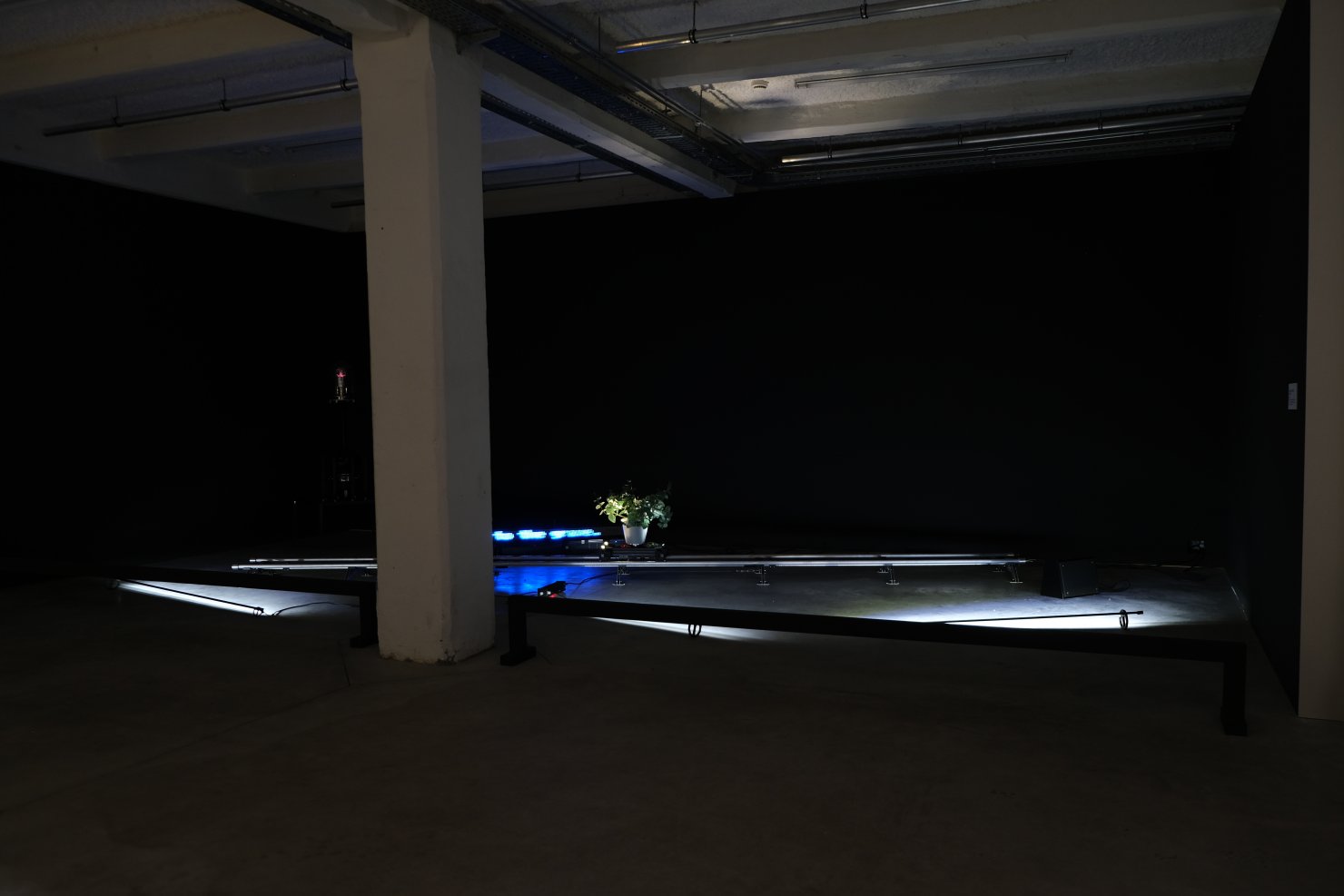“Margaret” has been created during the residency of Mathieu Zurstrassen for a two-months residency at iMAL (Brussels, Belgium). Mathieu Zurstrassen collaborated on the software development with Martin Pirson.
Margaret
WebsiteMargaret is an artificial intelligence machine initially created to fill the loneliness of a researcher, a fictional character named Hamilton. When the professor vanishes one day, Margaret has to face her own loneliness and decides to create her own companion: César 18.
Cesar 18 asks questions about Life; Biological, Metaphysical, Societal ... Margaret then decodes the questions and answers them by tapping on the resources of its database in order to educate C18 on the meaning of life, so that it too can become an "ESP" », An Emotional Support Plant blessed with intelligence and discernment.
The bottom line of the installation is to question the current status of what we still awkwardly call Artificial Intelligence, evoke the possible ability of a Neural Network to express Human like emotions like loneliness, and furthermore a human psychiatric disorder like; Schizophrenia.
«MARGARET» is an elaborate prototype of ’ESP’ or more precisely an; "Emotional Support Plant".She was designed by the eminent Professor Hamilton to fill her loneliness and converse with her as they both found themselves isolated in an undetermined cosmic area.
One day, after long cycles of exchanges and conversations, Margaret realized that Hamilton was on a no-return expedition. She then decided she would start to build her own “ESP” prototype .César18, will be the name of this project.
Through this installation, the artist Mathieu Zurstrassen questions the meaning of human creation by attributing this role to artificial intelligence that has been previously trained by humans.
Cesar 18 asks questions about Life; Biological, Metaphysical, Societal ... Margaret then decodes the questions and answers them by tapping on the resources of its database in order to educate C18 on the meaning of life, so that it too can become an "ESP" », An Emotional Support Plant blessed with intelligence and discernment.
The bottom line of the installation is to question the current status of what we still awkwardly call Artificial Intelligence, evoke the possible ability of a Neural Network to express Human like emotions like loneliness, and furthermore a human psychiatric disorder like; Schizophrenia.
Fictional context of « Margaret”
« Margaret »
Margaret spent her time contemplating the bright spots that stood out from the intense void that rise above her, she never imagined she could get tired of it and yet, it was precisely 8374 moons and 274 DynaLum units that she had had no contact with any form of autonomous life form.
Professor Hamilton had never returned from her last expedition, it was now a fact, there was no hope left.
Margaret owed her absolutely everything, starting with this atmospheric autonomy device; the Dynatron, which had kept it in remarkable living conditions for all this time.
Hamilton will not return.
Hamilton will not return, there was resolutely no more hope, no more interminable exchanges on the development of research projects, no more laughs, no more explorations, only remained the veil of admiration and the heavy loneliness.
Hamilton will not return, she was alone and the pulses of the nebulae which supplied the Dynatron with energy would no longer be enough to fill its isolation.
It was necessary to act and find the means to improve her situation, she would not hold another thousand moons in such conditions.
The immediate environment had eroded considerably, it was a consequence of the increased activity of the solar winds in recent cycles, it was obvious that things had not been going well for a while already.
The winds had carried away or fled under the surface any particle and this until loss of sight, everything had become gray and there was not much exploitable except, this famous prototype of mobile platform sheltering the last program of the Professor, The Ceasar18 or C18 program.
It was not finished but Margaret should eventually be able to continue the project, and thus change the course of things.
There may still have been some hope.
Software
The whole installation runs on custom software mainly written in Python and Java.
The content generation engine is based on 3 different machine learning models.
The questions are created using a Google T5 based Question generation template.
Answers are generated using a model trained on openai’s GPT2.
The translations are also generated in real time thanks to Google T5.
The Q&A generation models are both custom models created using a homemade python script relying on Pytorch and Tensorflow technology as well as the Transformers library from Huggingface.
The main script that drives Margaret is developed in Python and takes on the role of conductor of the various elements of the installation.
It revolves around 2 main functions:
On the one hand, it continuously generates new question / answer pairs in real time, translates from English to French and analyzes their positive or negative character. On the other hand it manages all interactions between Margaret and Césars as well as the display of the led matrix.
The movements and light devices are managed by several Arduino type micro-controllers, which communicate with the main script thanks to a tailor-made protocol, via cable for some and via radio frequency for others.
Hardware: Intel Computer, Arduino Nano, Feather M0, Custom Pcb, plasma, LeD, Led Martix, Rf technology, Motors, custom electronics, mechanics & robotics.
Keywords: Neural Networks; Artificial Intelligence; Speculative; art installation; future ecologies; Robotics, Kinetics; TTS; NLP; meaning of life, Human
Technical details
The whole installation runs on custom software mainly written in Python and Java.
The content generation engine is based on 3 different machine learning models : Google T5 based Question generation template, openai’s GPT2, and Google T5 translations.
The movements and light devices are managed by several Arduino type micro-controllers, which communicate with the main script thanks to a tailor-made protocol, via cable for some and via radio frequency for others.
Software development: Martin Pirson
https://mathieuzurstrassen.com/works/article/margaret
https://www.imal.org/fr/events/v2-residency-mathieu-zurstrassen

